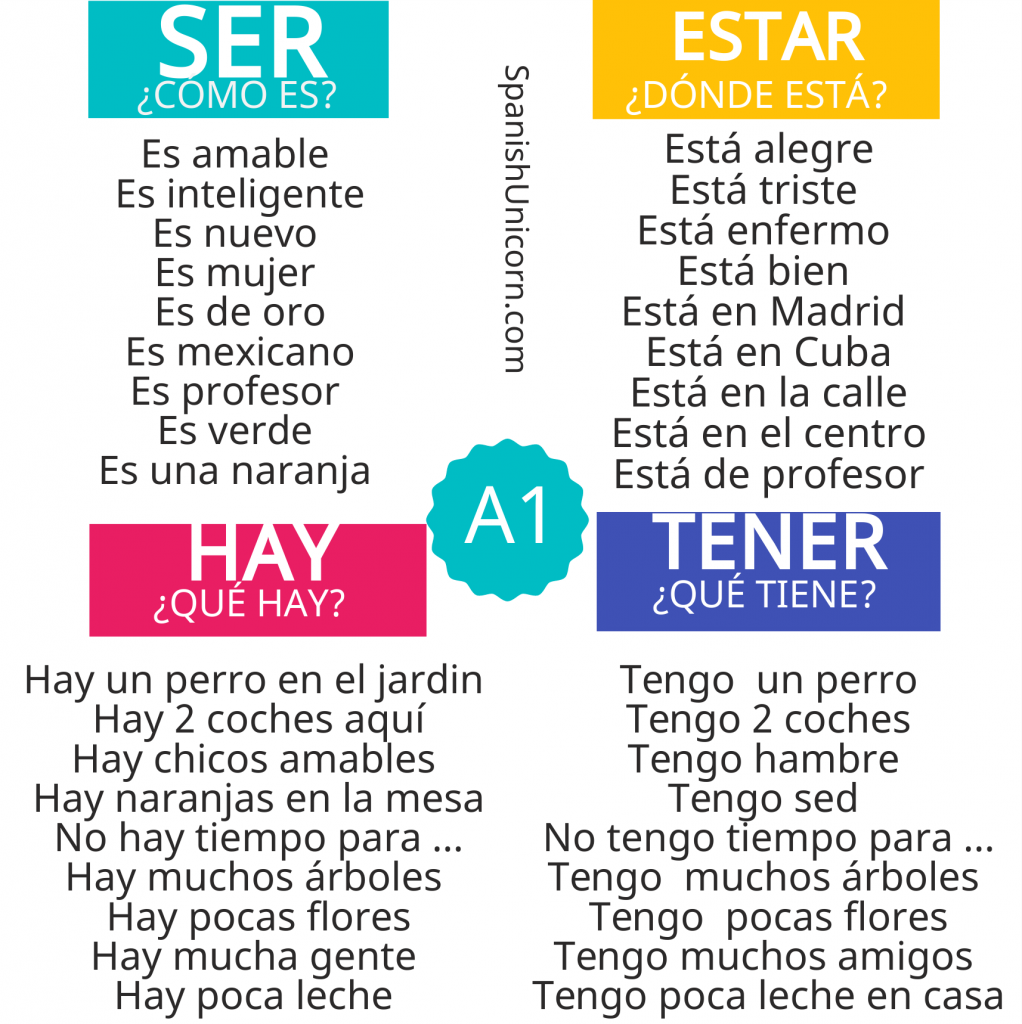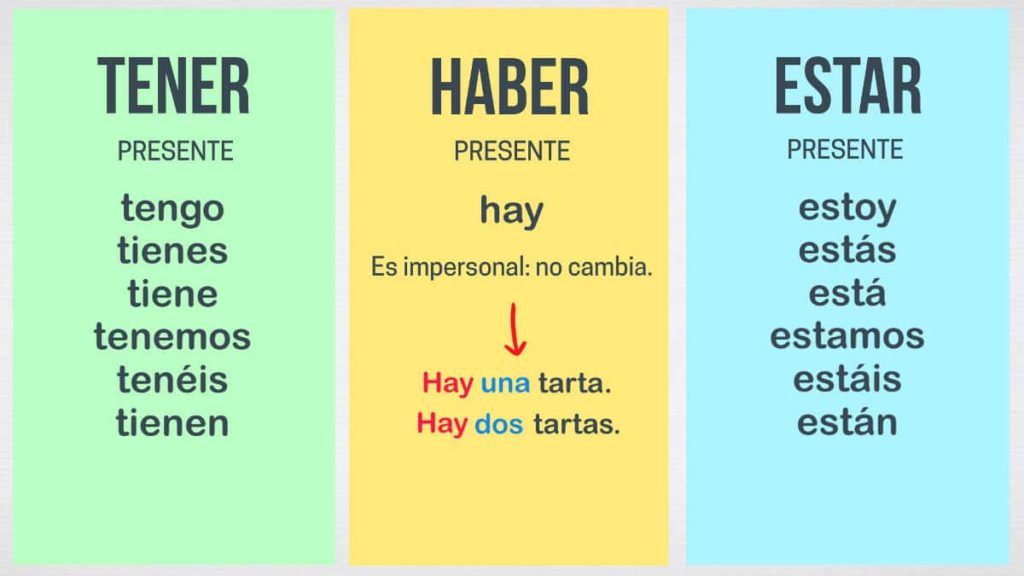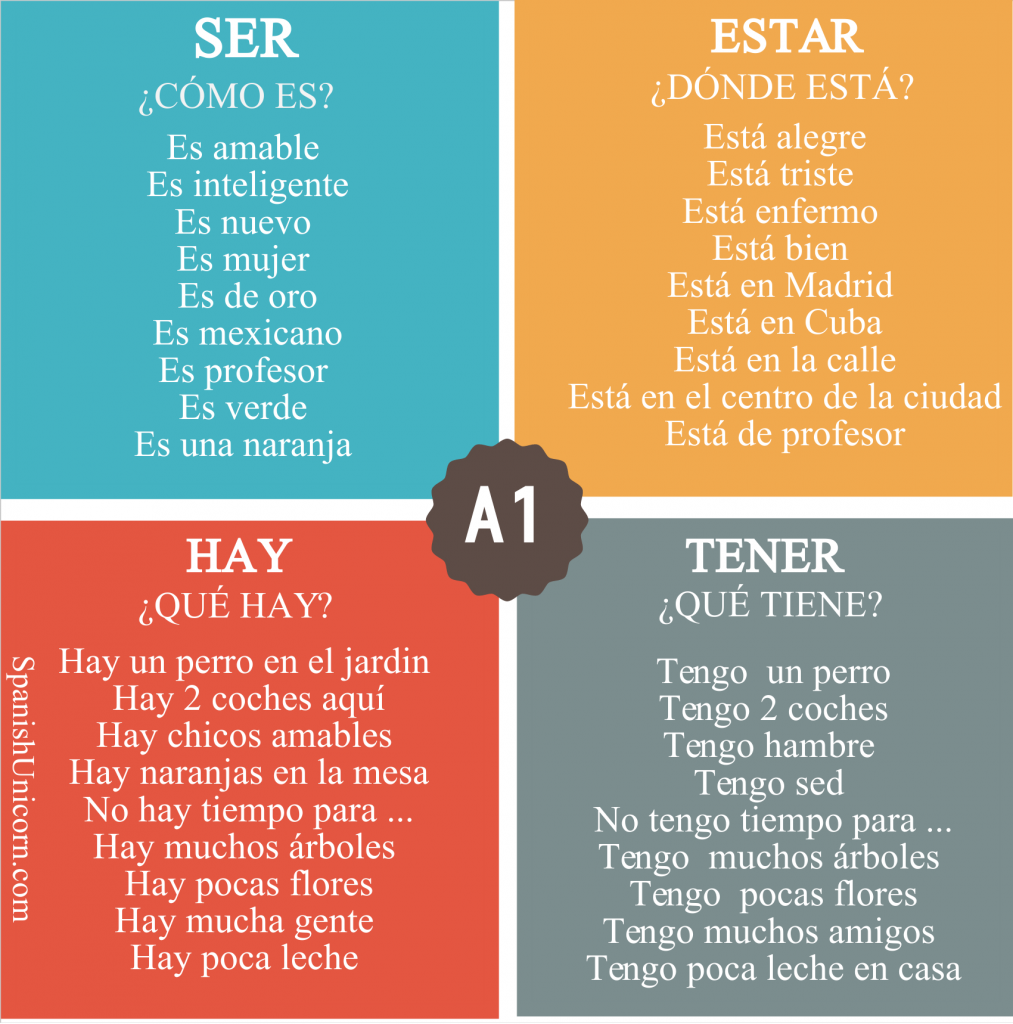
Ser, estar, haber La página del español
The difference between ser and estar is a confusing one. I hope a native can explain this better. There is also a third verb translated as to be. Roughly: Estar: To be located; To be in a mood; To be in a state (eg. dead or alive) To seem, to evoke feeling; Haber in the forms hay / haya: There is / are; Ser: If not otherwise specified, use ser.

Haber, tener y estar Ser y Estar Aprende Español Online
A quick and concise breakdown of the differences between ser, estar, and haber in Spanish.

Blends Worksheets, Spanish Worksheets, Spanish Teaching Resources
The following video introduces the basic vocabulary to talk about the weather in Spanish. It explains how to make simple sentences with the verbs SER, ESTAR, HABER and HACE and others. Besides, we will introduce several essential phrases and questions to talk about the weather that you will see later in this lesson with more details.

Czasowniki SER, ESTAR i HABER jak ich używać? Atticus
Ser, estar, haber. Practica el uso y la conjugación de los verbos "ser", "estar" y "haber" con esta actividad interactiva.

martinez Verbos Irregulares Ser Estar Y Haber
The difference is that haber, typically in the form of hay in the present tense or había for the past, is used to indicate the mere existence of the person or thing. Estar, on the other hand, is used to indicate the location of the person or thing. Note, for example, the difference between these two sentences: No hay presidente.

Ejercicios de gramática con ser estar tener haber
Ser, estar, haber, tener activity. This A1-level Spanish activity is designed to provide students with practical exercises that reinforce their understanding and usage of essential verbs such as ser, estar, haber, and tener. The activity takes an engaging and interactive approach by presenting 20 fabricated tweets containing false information.

HABER X TENER CLAUDIO MUZZIO
The Spanish verbs haber and tener can be translated in most cases with have. We use haber in impersonal sentences and as an auxiliary verb for certain tenses. In all other cases, we use the verb tener. Learn the difference between haber and tener in Spanish grammar. Master the conjugation of these verbs in the four basic Spanish tenses and get.
Ser estar haber tener ejercicios en presente
Ser, estar, haber, hacer and tener are five of the most frequently used verbs, they're a great place to start. Since they all can be used in situations where "to be" or "to become" is used in English, they're usually confusing for students. By breaking them down to their core elements, understanding them becomes much more digestible.

SER vs ESTAR. Infografía Gramática del español, Aprender español
Review Time: if you're not sure how to conjugate these two important verbs (they're irregular), check out the verb conjugation tables for ser and estar.. Uses of Ser. Ser is used to talk about permanent or lasting attributes.If this general rule is too vague for you, think of the acronym DOCTOR, which stands for Descriptions, Occupations, Characteristics, Time, Origin, and Relationships.

SERESTARHAYTENER quiz AIL Malaga Spanish Language School
Present Tense of "Ser," "Estar," and "Tener". Ser ( to be ), estar ( to be ), and tener ( to have ), three of the most frequently used verbs in Spanish, are all irregular in the present tense. The present tense conjugations for the irregular verbs ser, estar, and tener are given below, along with some examples.

SER, ESTAR, HABER. Describir una ciudad. Lección 11. leccion español
Ser: Characteristic, describe, identify, express time/date/location, impersonal expressions. Basically, its more permanent then estar. She is always sad, compared to she is sad today. Ella es triste. vs Ella está triste. Estar: Location, Condition, Progressive tense. Temporary, She is sick, not sick-minded

1000+ images about Ser, Estar, Tener y Haber on Pinterest Spanish
The verb to be can be expressed in Spanish by three words ser, estar, and haber. Learners of Spanish frequently confuse the three. Learners of Spanish frequently confuse the three. The main difference between them is that ser refers to inherent a-temporal characteristics, estar describes states and locations, and haber is used to express existence.

Ejercicios de gramática ser, estar, hay tener con clave y conjugación
Study the Spanish conjugation with online lessons. Learn the basic grammar rules. There are a number of verbs that have irregular forms other than the "yo" form. Four of the most frequently used verbs in Spanish (ser, estar, ir, and haber) are irregular. The Present Indicative conjugations for each are given below.

Ser estar tener haber Ejercicios de gramática
ser ancho: be wide: ser apto para: be suitable for: ser astuto: be smart: ser capaz de: be capable of: ser competente en: be competent at: ser culpable de: be guilty of: ser diferente de: be different from: ser dudoso: be doubtful: ser extraño: be strange: ser fácil: be easy: ser falso: be wrong: ser famoso por: be famous for: ser grande: be.

Preposiciones con ser estar haber tener Preposiciones, Practicas
The English verb be has two translations in Spanish grammar: ser and estar. Ser is used for qualities and characteristics and in connection with adverbs of time. Estar describes temporary conditions, location, the present progressive. Learn the difference between ser and estar with Lingolia's online grammar rules and free exercises. Our lists help you learn which words and expressions are.

Diferencia entre los verbos 'haber', 'estar' y 'tener' ProfeDeELE
I'll also show you common phrases and example sentences. These are the main meanings of the four verbs: ser - to be (permanent identity) estar - to be (temporary or location) tener - to be, to have, must. haber - to be, to have, to have to. As you can see, only ser and estar always mean "to be.". Tener and haber also have other.